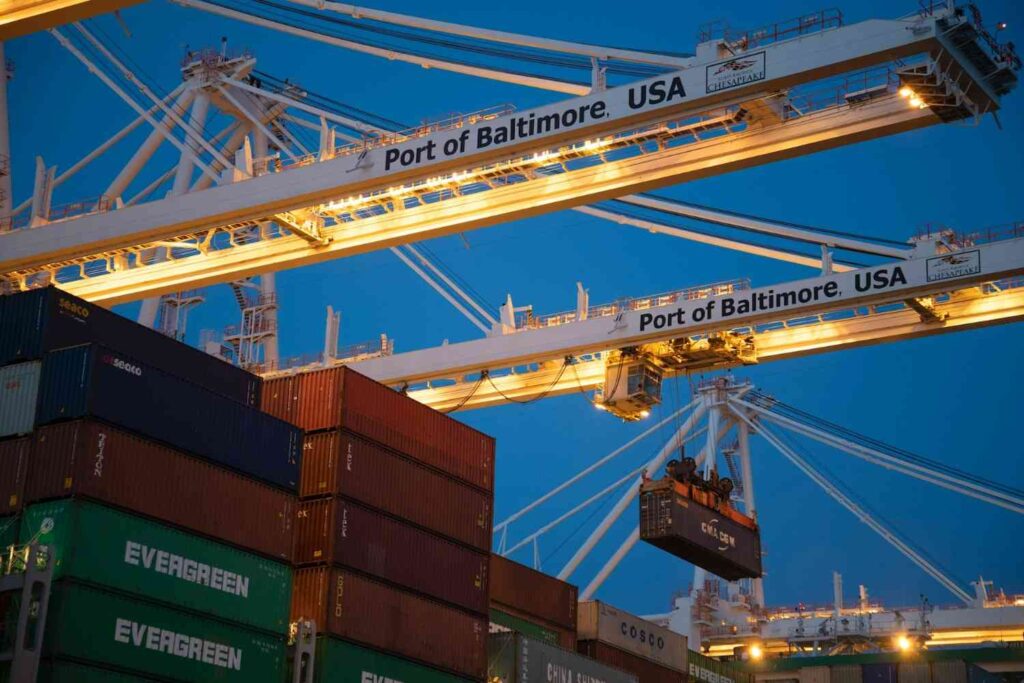
Export Car From USA To Canada: A Guide For 2025
Exporting a car from the USA to Canada can be a smooth process if you understand the necessary requirements. Both

In the vast world of international shipping, industry-specific acronyms can often feel like an impenetrable maze for newcomers and seasoned professionals alike. One such term that plays a pivotal role in securing the global supply chain is ISF, which stands for “Importer Security Filing.” But what exactly does ISF entail, and why is it so important in the shipping industry
In this comprehensive blog, we will unravel the mysteries surrounding ISF and delve into its significance for importers, carriers, and customs authorities. From its historical context to the current regulations, we will explore the evolution of ISF and its impact on ensuring cargo security and efficient customs clearance processes. Whether you are a shipping novice or a seasoned logistics expert, join us on this journey to demystify ISF and gain a deeper understanding of its critical role in the complex world of international trade.
Artemus provides comprehensive ISF compliance support through its advanced ISF software solution.
Table Of Contents
In shipping, ISF stands for “Importer Security Filing.” It is an indispensable prerequisite mandated by the U.S. Customs and Border Protection (CBP) within the framework of the Customs-Trade Partnership Against Terrorism (C-TPAT) program. The ISF regulation aims to enhance maritime security by providing CBP with advanced information about cargo being imported into the United States.
Importers are required to submit detailed data on their shipments at least 24 hours before the cargo is loaded onto a vessel bound for the U.S. This information includes essential details such as shipper and consignee information, container stuffing location, and commodity descriptions. By obtaining this data in advance, CBP can assess the potential security risks associated with incoming cargo, facilitating smoother customs clearance procedures and safeguarding the nation’s ports and supply chain against potential threats.
Non-compliance with ISF regulations may result in significant penalties and delays in cargo release. Therefore, it is essential for importers to understand and adhere to the ISF requirements to ensure a seamless shipping process.
Related: ISF Filing Requirements: Important Facts & Documents
Importer Security Filing (ISF) is a vital aspect of the U.S. Customs and Border Protection’s (CBP) security measures for shipping cargo into the United States. It requires importers, or their authorized agents, to submit specific information about the incoming cargo to CBP before the goods are loaded onto a vessel destined for the U.S. Understanding who must file ISF and the appropriate timing for filing is crucial to ensure compliance with the regulations and avoid potential penalties and delays.
It’s important to note that the ISF must be filed regardless of the method of transportation (vessel, air, truck, or rail) and even if the cargo is moving “in-bond” to a U.S. port. Non-compliance with ISF requirements can lead to financial penalties, cargo holds, and potential disruptions to the supply chain.
Related: ISF Filing Deadline: Timeline, Consequences, & Exceptions
In the world of international shipping, information plays a pivotal role in facilitating smooth customs clearance processes, and the Importer Security Filing (ISF) is no exception. ISF provides vital advance information about incoming cargo to U.S. Customs and Border Protection (CBP), which significantly impacts the customs clearance procedures at U.S. ports of entry.
By submitting detailed data on the cargo, such as shipper and consignee information, commodity descriptions, and container stuffing locations, importers enable CBP to assess potential security risks before the vessel arrives. This proactive approach helps CBP to identify high-risk shipments, allowing them to focus their resources on thorough inspections where necessary.
Consequently, compliant ISF filings contribute to faster and more efficient customs clearance, reducing delays and ensuring the smooth flow of goods through the supply chain.
Related: ISF Filing Cost: Elements, Hidden Costs, & Minimization Tips
The ISF 10+2 Rule, also known as the “Importer Security Filing and Additional Carrier Requirements,” was introduced by the U.S. Customs and Border Protection (CBP) as part of the implementation of the Security and Accountability for Every (SAFE) Port Act of 2006. This regulation came into effect on January 26, 2009, and aimed to enhance maritime security by requiring more comprehensive information about incoming cargo.
In the aftermath of the 9/11 terrorist attacks, there was an increased focus on securing the global supply chain and protecting the United States from potential threats posed by international shipping. As a response, the ISF 10+2 Rule was established to close security gaps and improve cargo risk assessment capabilities. The designation “10+2” pertains to the ten data components necessary from importers and the supplementary two elements requested from vessel carriers.
Originally, the ISF 10+2 Rule had a flexible “informed compliance” phase, allowing for a lenient approach towards non-compliance for a certain period. However, as of January 26, 2010, CBP began enforcing the rule strictly, and non-compliant shipments faced penalties and potential cargo holds.
The ten data elements required from importers include information about the manufacturer, seller, buyer, and other parties involved in the transaction, as well as details about the cargo itself. The additional two elements from vessel carriers include the vessel stow plan and container status messages. These combined data elements provide CBP with a comprehensive view of incoming cargo, enabling them to identify high-risk shipments and allocate inspection resources more efficiently.
Over time, the ISF 10+2 Rule has undergone refinements and adjustments to improve its effectiveness and accommodate industry feedback. Importers and carriers have adapted to the rule’s requirements, and customs authorities have used the gathered data to bolster supply chain security and expedite customs clearance processes.
Related: ISF Filing Online: A Beginner’s Guide To Your Import Process

The future of Importer Security Filing (ISF) in the shipping industry holds promising advancements and continued significance in ensuring supply chain security and efficiency. As technology continues to evolve, ISF processes are likely to become more streamlined and automated, reducing the administrative burden on importers and their authorized agents.
One potential development is the integration of blockchain technology into the ISF process. Blockchain’s decentralized and immutable nature could enhance data security, enabling the seamless sharing of information between relevant stakeholders while maintaining data integrity. This integration may further strengthen cargo tracking and tracing capabilities, providing real-time visibility into the movement of goods.
Moreover, artificial intelligence (AI) and machine learning applications are expected to play a significant role in the future of ISF. AI-driven algorithms can analyze vast amounts of data and patterns, facilitating more accurate risk assessments and targeted inspections. This will help customs authorities prioritize high-risk shipments, leading to more efficient customs clearance procedures.
Related: A Quick Guide On Import Security Filing: What Is ISF?
The ISF for shipping is typically filed by the “importer of record” or their authorized customs broker or freight forwarder. They are responsible for submitting the required data to U.S. Customs and Border Protection (CBP) at least 24 hours before the cargo is loaded onto a vessel bound for the United States.
The ISF fee is a financial penalty imposed by U.S. Customs and Border Protection (CBP) for non-compliance with the Importer Security Filing (ISF) requirements.
ISF customs clearance refers to the process of providing advance cargo information through the Importer Security Filing (ISF) to U.S. Customs and Border Protection (CBP) before the shipment arrives at a U.S. port, ensuring smoother customs procedures.

In conclusion, understanding what ISF stands for in shipping, “Importer Security Filing,” is essential for anyone involved in international trade and logistics. The Importer Security Filing requirement has emerged as a crucial element of maritime security, enabling U.S. Customs and Border Protection (CBP) to obtain vital advance information about incoming cargo.
By providing comprehensive data on shipments at least 24 hours before they are loaded onto vessels destined for the United States, ISF plays a pivotal role in mitigating potential security risks and streamlining customs clearance processes. Throughout this blog, we have explored the historical context, compliance requirements, and the role of ISF in enhancing supply chain security.
Related: Ocean AMS Filing Requirements: 7 Must-Have Documents

Exporting a car from the USA to Canada can be a smooth process if you understand the necessary requirements. Both

Japan’s trade system is central to its economy, with imports like raw materials and food supporting its industries and population.

Exporting cars from the USA involves complying with legal and customs regulations. It requires proper documentation, including title and registration,
Get In Touch
Artemus’ Software Solutions for ISF, AMS, Japan AFR, eManifest Canada, & Panama B2B filings.